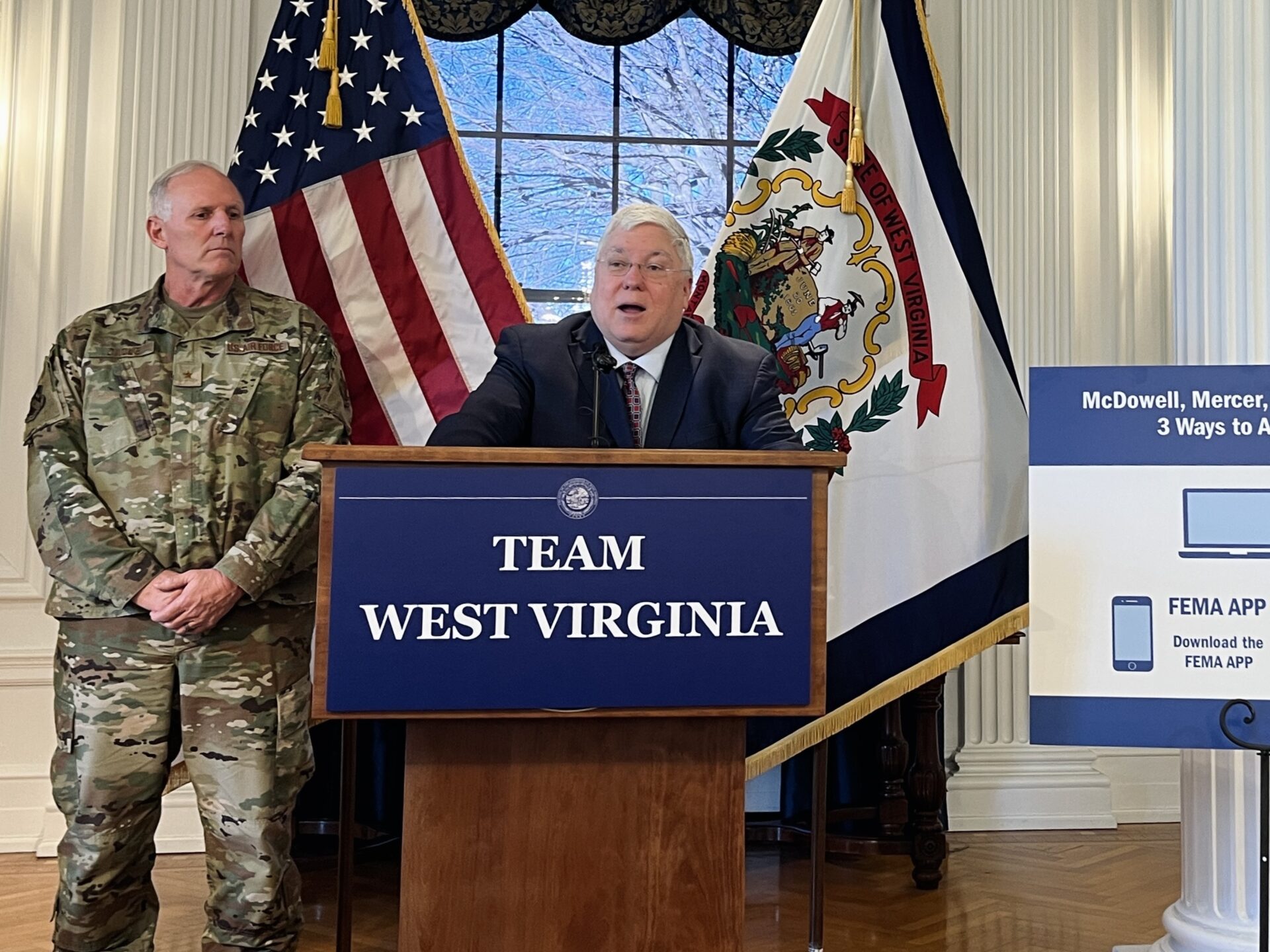When flash flooding struck the region in early February, it claimed at least 27 lives between West Virginia and Kentucky, leaving widespread infrastructure damage in its wake.
Nearly two months later, federal aid dollars have been slow to roll out, even as some of the state’s poorest counties continue to feel the flooding’s effect. Now, some residents affected by the severe weather event have learned they do not qualify for federal financial support.
Gov. Patrick Morrisey announced Tuesday night that the Federal Emergency Management Agency (FEMA) had denied his request for individualized disaster aid to affected residents of Boone, Cabell, Greenbrier, Kanawha, Lincoln, Monroe and Summers counties.
FEMA’s individual assistance program can cover costs for things like housing repairs and immediate emergency needs.
The governor’s office said FEMA also denied a request for public assistance dollars for Cabell and Kanawha counties. FEMA’s public assistance program helps local governments cover repair costs for things like roadways and public infrastructure.
Morrisey said he “will look at all options” to appeal FEMA’s decision in a press release Tuesday.
After the flooding incident, the governor requested FEMA aid for 14 West Virginia counties. The funding for seven counties had been approved, but Morrisey said in March he still awaited a response on the remaining counties.
“Despite today’s notification, I am grateful to the Trump administration for their strong support for southern West Virginia’s recovery following the February floods,” Morrisey said in the press release. FEMA aid requests must receive final approval from the president’s office.
Before this week, the agency had already approved individual assistance for residents of Logan, McDowell, Mercer, Mingo, Raleigh, Wayne and Wyoming counties.
Additionally, the agency has granted Boone, Greenbrier, Lincoln, Logan, McDowell, Mercer, Mingo, Monroe, Raleigh, Summers, Wayne and Wyoming counties access to public assistance funds.
For residents of these counties, the deadline to apply for individual aid through FEMA is fast approaching. These funds can only be used on costs not already covered by insurance.
Residents of Logan, McDowell, Mercer, Mingo, Raleigh, Wayne and Wyoming counties have less than one week to apply for individual assistance over the February floods. Applications are due April 28, and can be submitted through the FEMA website.
For in-person support, residents can also visit four disaster recovery centers in West Virginia, located in McDowell, Mingo, Raleigh, and Wyoming counties. Visit the FEMA website to learn more.
